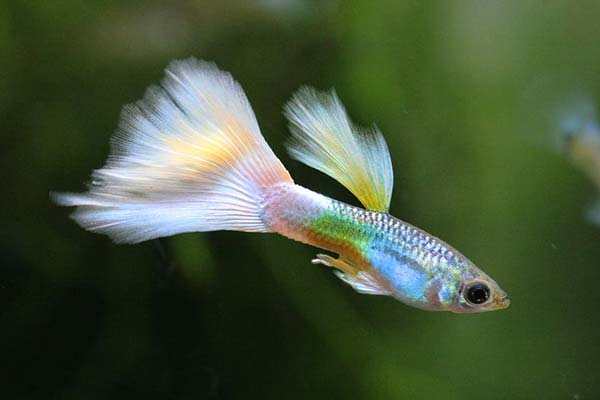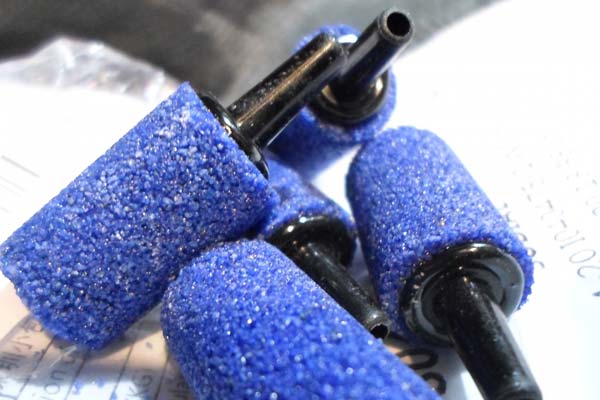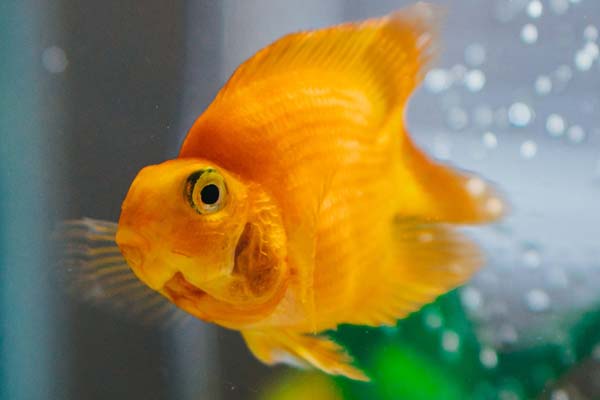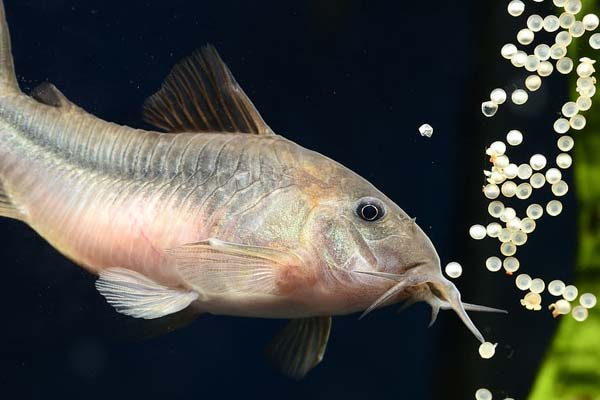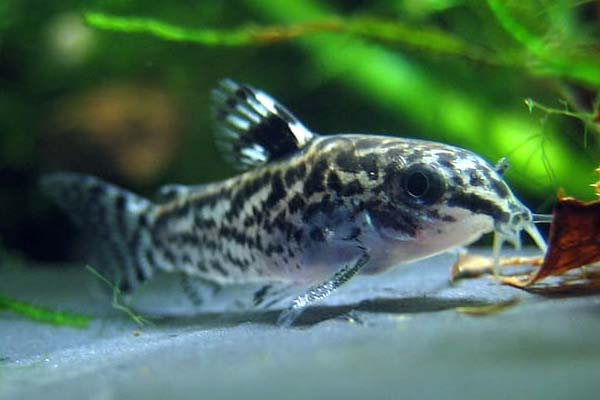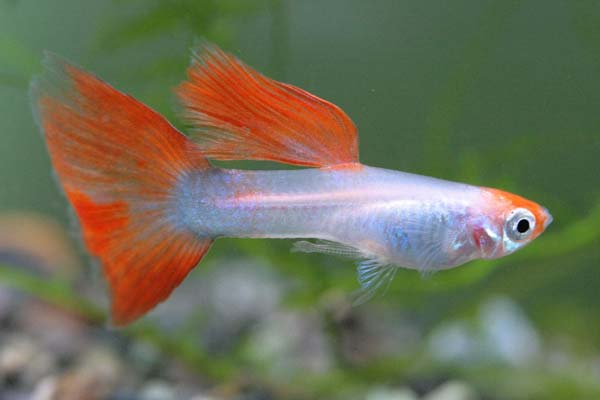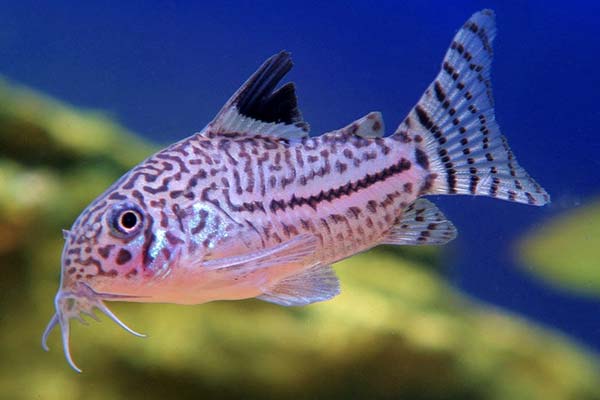Types of Guppies: A Comprehensive Guide
Guppies are one of the most popular freshwater aquarium fish species and have been kept by hobbyists for over a century.
They are known for their vibrant colors, distinct patterns, and diverse tail shapes. Many different types of guppies are available on the market, each with its unique characteristics.
The basic types of guppies include fancy, endler’s, show, wild-type, and hybrid strains. Fancy guppies are the most common and are noted for their extensive-tail shapes and highly bred color morphs.
Endler’s guppies are smaller and more active than fancy guppies, known for their metallic and iridescent colors.
Show guppies are bred for their large tails and bright colors, while wild-type guppies are the natural form of the species found in the wild. Hybrid guppy strains are created by breeding different types of guppies together to produce new and unique characteristics.
Learning about their care requirements and breeding basics is essential to keep guppies. Guppies can live for up to two years with proper care and breed quickly in a home aquarium.
Key Takeaways
- Guppies are a popular freshwater aquarium fish species known for their vibrant colors and diverse tail shapes.
- There are several basic types of guppies, including fancy, endler’s, show, wild-type, and hybrid strains.
- Learning about their care requirements and breeding basics is essential to keep guppies healthy and breeding.
Basic Types of Guppies
Guppies are a popular species of freshwater fish that come in various colors, patterns, and tail shapes. They are known for their vibrant hues, energetic personalities, and ease of care, making them a favorite among beginner and experienced aquarists.
This section will explore the basic types of guppies, including their common variations and color features.
Common Variations
There are three main types of guppies: common, fancy, and wild. The common guppy, or Poecilia reticulata, is the most widely available and hardy species. They come in various colors and tail shapes, including fan, sword, and round tails.
The fancy guppy, also known as the show guppy, is a selectively bred variation of the common guppy that features more elaborate tail shapes, such as delta, veil, and lyretail. The wild guppy, or Poecilia wingei, is a smaller and less common species found in the wild in South America.
Color Features
Guppies are known for their stunning colors, often used to attract mates and ward off predators. They come in various hues, including red, black, blue, green, purple, yellow, and more.
Guppies’ color intensity and pattern can vary depending on their genetics, diet, and environment. Some guppies have solid-colored bodies, while others have intricate patterns and markings. The tail and fins of guppies can also be a different color than their body, which adds to their visual appeal.
Fancy Guppy Varieties
Fancy Guppies, also known as Poecilia reticulata, are among the oldest and most popular guppies in the aquarium trade. They are known for their extensive tail shapes and distinct, highly bred color morphs. In this section, we will discuss the different varieties of fancy guppies.
Colorful Patterns and Tail Variations
Fancy Guppies offer a wide variety of colors and patterns to choose from. Popular colors among these guppies include red, blue, green, yellow, and orange. These colors can be combined to create captivating patterns like snakeskin, lace, and tuxedo patterns, resulting in unique and visually stunning guppies.
Tail variations are another distinguishing feature of fancy guppies. Some popular tail shapes include the lyretail, fantail, spear tail, triangle tail, round tail, and half-moon tail.
The lyretail guppy has a tail that resembles a lyre, while the fantail guppy has a tail that spreads out like a fan. The spear-tail guppy has a tail that tapers to a point, while the triangle-tail guppy has a tail that forms a triangle shape.
Unique Body Shapes
In addition to their colorful patterns and tail variations, fancy guppies come in unique body shapes. Some popular body shapes include the cobra guppy, top swordtail, bottom swordtail, and double swordtail.
The cobra guppy has a body that resembles a cobra, while the top swordtail guppy has a sword-like extension on its upper tail fin. The bottom swordtail guppy has a sword-like extension on its lower tail fin, and the double swordtail guppy has sword-like extensions on its upper and lower tail fins.
Endler’s Guppies
Endler’s guppies, also known as Poecilia Wingei, are a popular type of freshwater fish that are becoming increasingly popular among aquarists.
These miniature, colorful, and hardy species are native to South America, specifically Venezuela, where they inhabit streams and other freshwater bodies. They are closely related to the common guppy and can even crossbreed.
Miniature, Colorful, and Hardy Species
Endler’s guppies are small-sized fish well-suited for beginners due to their easy care requirements. They are highly flexible and can thrive in various water conditions. One of their most notable features is their vibrant and eye-catching colors, which add a striking visual appeal to any aquarium.
They come in various hues, including orange, silver, black, purple, yellow, and blue, making them a popular choice for those who want to add a splash of color to their aquarium.
Breeding and Care Considerations
Endler’s guppies are prolific breeders and can quickly populate a tank if left unchecked. Keeping males and females separate is crucial if you don’t want them to breed.
However, if you want to breed them, providing them with plenty of hiding places and a varied diet which includes live and frozen foods is crucial. Endler’s guppies are relatively easy to care for when it comes to care.
They require a well-maintained tank with clean water and a varied diet. They are also quite hardy and can tolerate various water conditions, although they prefer alkaline water with a pH between 7.0 and 8.0.
Endler’s guppies have been selectively bred in captivity to produce various color patterns and tail shapes. While this has resulted in some stunning specimens, it’s important to note that these fish may be more fragile than their wild counterparts.
Choosing healthy specimens and providing them with proper care is vital to ensure their well-being.
Show Guppies
Show guppies are a special breed of guppies bred for their beauty and unique traits. They are often showcased in competitions and exhibitions where breeders and enthusiasts can display their prized specimens.
This section will explore show guppies’ standards, selective breeding, and traits.
Standards
Show guppies are judged based on standards that evaluate their physical appearance and traits. Breeding associations establish these criteria and can differ across countries or regions.
Generally, show guppies should have a well-proportioned body, a large and colorful tail, and vibrant colors that are consistent throughout their body.
Selective Breeding
Selective breeding involves intentionally mating guppies with desirable traits to produce offspring that inherit and exhibit those traits.
Show guppies have been selectively bred for generations to enhance their beauty and unique traits. Breeders carefully choose the parents based on their physical appearance and genetic makeup to produce offspring that meet the show standards.
Traits
Show guppies can have a variety of traits that make them stand out from other guppies. Some of the most popular characteristics include:
- Color: Show guppies display various colors, including red, blue, green, and purple. Some guppies have multiple colors or patterns on their body and tail.
- Size: Show guppies are typically larger than others, with a well-proportioned body and a large, flowing tail.
- Tail shape: The tail shape is one of the most essential traits of show guppies. Some of the most popular tail shapes include the delta, veil, and fan tail.
- Fin shape: The dorsal and anal fins should be well-developed and complement the tail shape.
- Body shape: The body should be well-proportioned, with a rounded belly and a straight back.
Wild-Type Guppies
Natural Coloration
Wild-type guppies, also known as common guppies, have a natural coloration that is typically duller than their domesticated counterparts. They have a grayish-green body with black spots and stripes.
The males have a colorful caudal fin, while the females have a more subdued one. The wild-type guppies are not as flashy as the fancy guppies, but they still have their charm.
Origin and Habitat
The wild-type guppies, scientifically known as Poecilia reticulata, are native to the freshwaters of South America. They are found in various habitats, such as streams, rivers, and ponds.
Guppies are known for their hardiness and ability to adapt to various water conditions and temperatures. Wild-type guppies are still commonly found in the wild but have also been introduced in different parts of the world, including Asia, Africa, and Europe.
Care and Maintenance Tips
Wild-type guppies are easy to care for and popular pets among aquarists. They are freshwater fish that can thrive in a variety of water conditions.
They can be kept in a tank as small as 5 gallons, but a larger tank is recommended for a more comfortable environment. The tank should be well-filtered and have a temperature of 72-82°F. The pH level should be between 7.0-8.5.
Feeding wild-type guppies is simple, as they are not picky eaters. They readily accept a variety of commercial fish food options, including flakes, pellets, and freeze-dried food. It is advisable to include live or frozen food like brine shrimp or bloodworms as a nutritional supplement to enhance their diet.
Hybrid Guppy Strains
Crossbreeding
Hybrid guppy strains are created by crossbreeding different pure strains of guppies. This process, known as selective breeding, is used to achieve specific traits in the offspring. The Poeciliidae family, which includes guppies, is known for its high adaptability, which makes them ideal for crossbreeding.
Traits
Hybrid guppy strains can exhibit various traits, including color, pattern, fin shape, and body size. Breeders can selectively breed for specific characteristics, resulting in unique and diverse strains of guppies.
Among the popular hybrid strains, the fancy guppy, delta tail guppy, and half-black pastel guppy stand out as some of the most sought-after varieties.
Challenges
While selective breeding can produce desirable traits, it can also lead to genetic defects and health problems in the offspring. Breeders must carefully monitor the breeding process to ensure the health and well-being of the guppies. Overbreeding and inbreeding can also lead to weaker strains and decreased genetic diversity.
Guppy Care Tips
When it comes to caring for guppies, there are a few things you need to keep in mind to ensure that they thrive and live healthy life. Here are some tips to help you take care of your guppies.
Ideal Water Conditions
Guppies are tropical fish, so they must be kept in warm water. The ideal temperature for guppies is between 72°F and 82°F. The pH level of the water should be between 7.0 and 8.2. You can utilize a pH testing kit to measure the pH level of the water in your aquarium.
Tank Setup and Size
Guppies are small fish and can be kept in a relatively small tank. However, it’s crucial to ensure the tank is large enough to accommodate the number of guppies you have.
A good rule of thumb is to have at least one gallon of water for every inch of fish. For example, if you have five guppies that are two inches long, you should have a tank that holds at least ten gallons of water.
In addition to the size of the tank, you’ll also need to ensure it’s appropriately set up. This includes adding a filter to keep the water clean, a heater to maintain the ideal temperature, and a light to simulate a natural day and night cycle.
Feeding and Maintenance Guidelines
Guppies are:
- Versatile eaters.
- Accepting a variety of foods such as flakes.
- Pellets.
- Live options like brine shrimp or bloodworms.
Feeding them in small amounts two to three times daily is crucial to prevent overfeeding and maintain water cleanliness.
Regular water changes and filter maintenance are critical for a healthy tank. Accessing necessary supplies at a local pet store will aid in proper guppy care, ensuring their happiness and well-being.
Guppy Breeding Basics
Preparation
Before starting guppy breeding, it is essential to ensure that the pet owner understands the process. The first step is to prepare the aquarium for breeding.
The ideal temperature for breeding is between 75-78° Fahrenheit, and the pH level should be between 7.0 and 8.0. The aquarium should have many hiding places for the fry, such as plants or decorations. It is also recommended to have a substrate, such as gravel or sand, and a filter sponge.
It is crucial to select the fish for breeding carefully. The pet owner should choose male and female guppies with good health and desirable traits. Selective breeding can help achieve specific patterns and colors in the offspring. The number of fish to breed should also be taken into consideration.
Strategies
After preparing the aquarium, the subsequent step involves introducing male and female guppies to the tank. Having two females for every male is recommended to prevent the male guppy from becoming exhausted.
The breeding process can take several hours, during which the male guppy will chase the female guppy and fertilize her eggs.
After breeding, the female guppy will give birth to live fry within four to six weeks. Removing the adult guppies from the aquarium is crucial as they may eat the fry. The fry should be fed small amounts of food several times daily, and the water quality should be monitored regularly.
Raising Fry
Raising the fry requires proper care and attention. The aquarium should have a suitable filtration system to maintain water quality, and the fry should be provided with small amounts of food several times a day. The fry should also be fed with hiding places to avoid being eaten by adult fish.
As the fry grows, they will develop distinct patterns and colors. Selective breeding can help achieve specific patterns and colors in future generations.
Conclusion
Guppies are a diverse and widespread freshwater fish species, offering various colors, patterns, and tail shapes. Factors such as aquarium size, water parameters, and compatibility with other fish should be considered when selecting guppies.
Guppies are hardy and adaptable, but providing a suitable environment for optimal well-being is essential. Keeping guppies can be a rewarding experience, as they are easy to care for, breed, and observe. Their vibrant colors and playful nature add beauty and entertainment to any freshwater aquarium.

